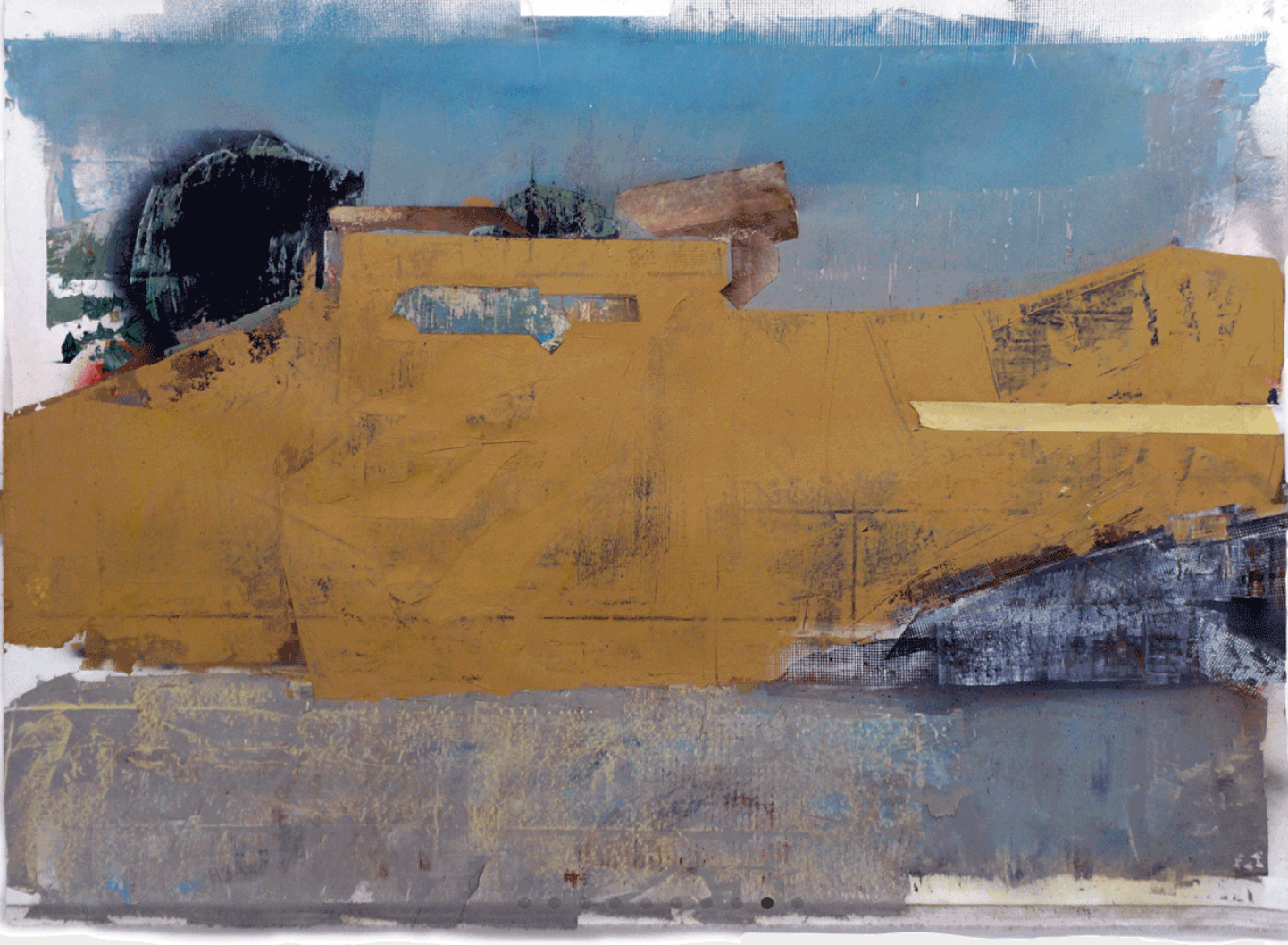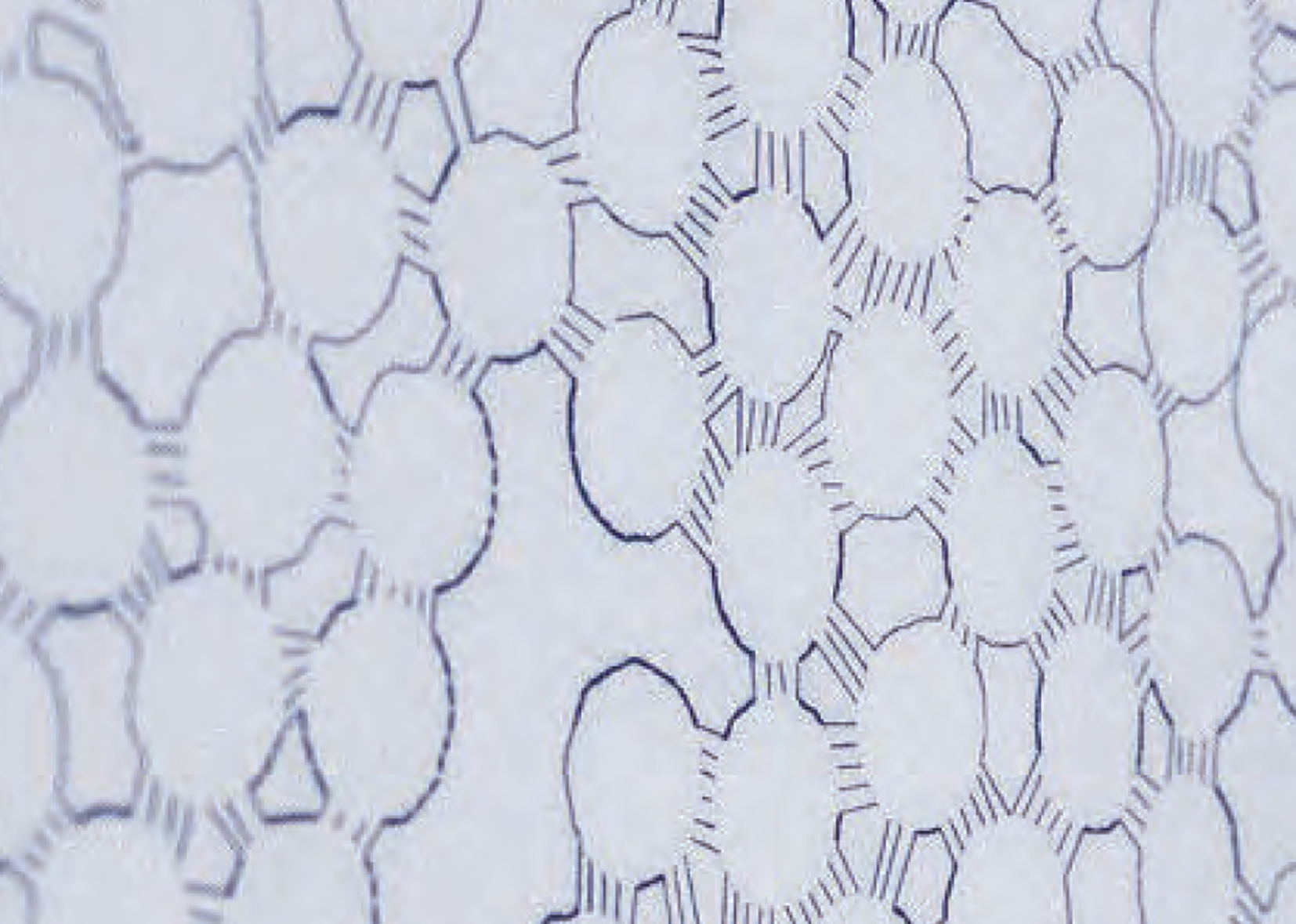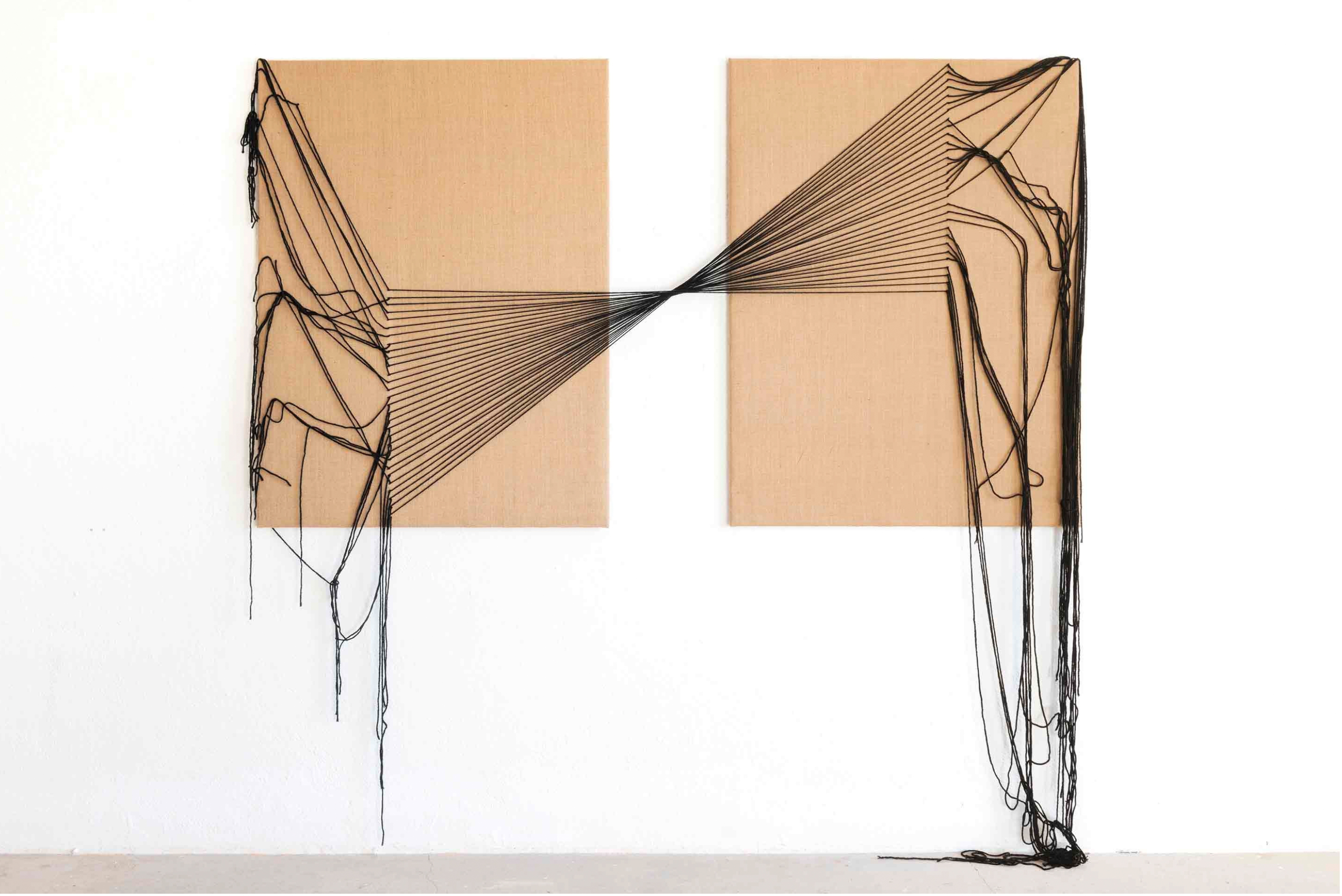Landschaft: Sich in den Raum verlaufen lassen / Landscape: Letting Oneself Dissolve into Space
12.06.–10.07.2021
Artists of this exhibition project LANDSCHAFT: SICH IN DEN RAUM VERLAUFEN LASSEN
Katrin Günther, Berlin
Richard Tisserand, Eschenz/Paris
Ursula Waldburger, Arbon
Streams, an undertow, fragments… The three artists demonstrate with their work which movements and forms landscapes – be they gardens, hills, or urban landscapes – carry within them. The different media employed by the artists create new movements and unexpected phenomena, transforming the rooms of the Haus zur Glocke.
In Katrin Günther’s work, two approaches compete: “The sophisticated momentum of the fantastical constructions can only be seen from some distance; the details, by contrast, appear only up close, which means that the gaze is lost in the tangle of forms and the pull into the spatial depth of the room becomes all the more dramatic. Only by focusing on details, one can see the proportions and thus the sublimity of those feral constructs. This explains the uncanniness of some beholders feel while beholding Günthers’ drawings: they suddenly become aware of the immeasurable depth into which the gaze crashes, or of the sheer mass that hangs over them like the sword of Damocles, and which is on the verge of collapsing onto them due to its dynamic movement…” (Heinz Stahlhut, 2016)
Richard Tisserand transfers fragmentary garden images as “oeuvre perdu” directly onto the wall of the Haus zur Glocke, using a method known from so-called scraping pictures. Due to the absence of a picture frame or an edge of glass, as is the case here, the pictorial pieces of the painting turn into an installation that floats on the wall and points beyond the limits of the picture. With the term fragmentary, the artist refers to the gardens of Romanticism, where entire parks were conceived with so-called unfinished, reconstructed ruins.
Ursula Waldburger roams with her camera, hoping to be found by lost, hidden stories. “Getting lost in the forest, in the stream, in the field and on the meadow… This is life, mine”, the artist says. Through the medium of embroidery, she wants to make this state visible. She works by observing accurately but then taking off the leash. Through its implementation in embroidery, the picture deepens. It is resolution but also compression to the core, translation, precision.
![[Translate to English:] Richard Tisserand, An die Wand gestellt, 2020 [Translate to English:] Richard Tisserand, An die Wand gestellt, 2020](/fileadmin/_processed_/2/b/csm_Andie_Wandgestellt2a_d46bd11f2a.jpg)
![[Translate to English:] Richard Tisserand, Gabriela [Translate to English:] Richard Tisserand, Gabriela, 2020](/fileadmin/_processed_/2/a/csm_Gabriela1A_ac9adf5b07.jpg)
![[Translate to English:] Richard Tisserand, Fragment [Translate to English:] Richard Tisserand, Fragment, 2020](/fileadmin/_processed_/0/5/csm_Fragment1_934b34a8e6.jpg)
![[Translate to English:] Richard Tisserand, Fragmentarisches [Translate to English:] Richard Tisserand, Fragmentarisches](/fileadmin/_processed_/a/a/csm_Fragmentarisches_1_6677c72c9f.jpeg)
![[Translate to English:] Katrin Günther, Urbane Strömung III, 2019 [Translate to English:] Katrin Günther, Urbane Strömung III, 2019](/fileadmin/_processed_/2/4/csm_Urbane_Stro__mung_III__195x355cm__2019_f3206fa2ec.jpg)
![[Translate to English:] Katrin Günther, Zweiter Schuss, 2020 [Translate to English:] Katrin Günther, Zweiter Schuss, 2020](/fileadmin/_processed_/4/e/csm_Zweiter_Schuss__Tusche__Acryl_auf_Leinwand__150x250cm__2020.5_495422b597.jpg)
![[Translate to English:] Katrin Günther, Taubenstrasse, 2020 [Translate to English:] Katrin Günther, Taubenstrasse, 2020](/fileadmin/_processed_/1/b/csm_Taubenstrasse__Tusche__Acryl_auf_leinwand__150x250cm__2020_9e56336e63.jpg)
![[Translate to English:] Katrin Günther, Atelieransicht, 2020 [Translate to English:] Katrin Günther, Atelieransicht, 2020](/fileadmin/_processed_/4/2/csm_Gu__nther_Atelier_5_2020_f362781ef0.jpeg)
![[Translate to English:] Ursula Waldburger, Detail Rigiflanke [Translate to English:] Ursula Waldburger, Detail Rigiflanke](/fileadmin/_processed_/e/1/csm_Rigiflanke_momentaryklein_f2a8b8c54c.jpeg)
![[Translate to English:] Ursula Waldburger, Detail [Translate to English:] Ursula Waldburger, Detail](/fileadmin/_processed_/0/9/csm_Home_Kunst_Organza-980x653_bb3882d99a.jpg)
![[Translate to English:] Ursula Waldburger, Detail [Translate to English:] Ursula Waldburger, Detail](/fileadmin/_processed_/5/8/csm_IMG_1360-scaled_10a0de837f.jpeg)



